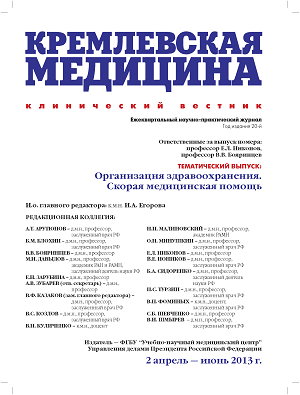Анализ мирового опыта внедрения моделей разделения рисков (Risk-sharing schemes) для повышения доступности инновационной лекарственной терапии
Организация здравоохранения
Дата публикации: декабря 4, 2014
Аннотация
В статье рассматриваются примеры новых типов соглашений, заключаемых в разных странах в отношении иннова-ционных лекарственных препаратов и предусматривающих разделение рисков плательщиков (государства, страховыхкомпаний, больниц) с фармпроизводителями. Приводится классификация такого рода моделей. Анализируются раз-личия финансово-зависимых и исход-зависимых схем. Показано, что внедрение финансово-зависимых схем являетсянесколько более простым способом, имеет более низкий уровень административных издержек и требований к инфор-мации, принимаемой в расчет. Исход-зависимые схемы значительно более сложны и затратны в реализации, однакоболее эффективны с клинической точки зрения. Рассматриваются преимущества, которые может получить каждая изсторон при реализации такого рода соглашений. Анализируются риски и ограничения, которые необходимо учитыватьпри принятии решения о внедрении схем разделения рисков.Ключевые слова: схемы разделения рисков, risk-sharing schemes, схемы доступа пациентов, доступность иннова-ционных препаратов, исход-зависимые схемы, обусловленное возмещение.The article analyzes examples of new types of agreements which are signed for new innovative medicamentous preparationsin various countries and provide risk-sharing schemes for payers (state, insurance companies, hospitals) and pharmaceuticalmanufacturers. There is classification for such types of models. Differences between various financially-dependent and outcomedependentschemes are analyzed. It is shown that the implementation of financially-dependent schemes is somewhat simpler; italso has a lower level of administrative expenses and information requirements . Outcome-dependent schemes are much morecomplicated and expensive; however, they are more effective from a clinical point of view. One can see the advantages thateach side can get under the implementation of such agreements. Risks and limitations, which must be taken into considerationwhen one is making a decision on implementing risk-sharing schemes, are analyzed as well.Key words: risk-sharing schemes, availability of schemes to patients, availability of innovative medicamentouspreparations, outcome-dependent schemes.Литература
1. Adamski Jakub, Godman Brian, Ofierska-Sujkowska
Gabriella et al. (2010) Risk sharing arrangements
for pharmaceuticals: potential considerations and
recommendations for European payers. BMC Health Services
Research 2010, 10:153. http://www.biomedcentral.com/1472-
6963/10/153;Espín J., Rovira J., García L. Experiences and
Impact of European Risk-Sharing Schemes Focusing on Oncology
Medicines. EMINet, 2011 http://ec.europa.eu/enterprise/
sectors/healthcare/files/docs/risksharing_oncology_012011_
en.pdf;
2. Pugatch M., Healy P. and Chu R., Sharing the Burden:
Could risk-sharing change the way we pay for healthcare? The
Stockholm Network, 2010, 38 p.;
3. Inotai A., Kaló Z. Risk sharing methods in middle income
countries Acta Pharm Hung. 2012;82(1):43-52;
4. Ando G, Reinaud F, Bharath A . Global Pharmaceutical
Risk-sharing Agreement Trends in 2010 and 2011, IHS Global
Insight - London & Paris, http://www.ihs.com/products/globalinsight/
industry-analysis/healthcare-pharmaceutical/risksharing.
aspx;
5. Rauland M. Risk sharing: mitigate uncertainty http://
www.pmlive.com/pharma_news/risk_sharing_mitigate_
uncertainty_301541;
6. Омельяновский В.В., Концепция разделения рисков:
первые результаты и возможности. Доклад. http://www.
hta-rus.ru/files/omeliyanovski_1301480027.pdf;
7. Schoonveld Ed., Kloss S. Market access: Risk sharing
and alternative pricing schemes. Posted on Aug 10, 2010; http://
social.eyeforpharma.com;
8. Clement F., Harris A., Li JJ., Yong K., Lee K., Manns
BJ.: Using effectiveness and cost-effectiveness to make drug
coverage decisions – a comparison of Britain, Australia and
Canada. JAMA 2009, 302:1437-43;
9. McCabe C., Stafinski T., Edlin R., Menon D.: Access with
evidence development schemes - a framework for description and
evaluation. Pharmacoeconomics 2010, 28:143-52;
10. Stafinski T., McCabe C., Menon D.: Funding the
unfundable – mechanisms for managing uncertainty in decisions
on the introduction of new and innovative technologies into
healthcare systems. Pharmacoeconomics 2010, 28:113-42;
11. Webb D., Walker A.: Value-based pricing of drugs in the
UK. Lancet 2007, 369:1415-6.
12. Walker A., Booth C., Brown A., Paterson K.: How much
good do new medicines do? Basic & Clin Pharm & Toxicology.
2009, 105 (Suppl 1):29;
13. Leader. Looking beyond the headlines. The Lancet
Oncology 2007, 8:561;
14. Walley T.: Neuropsychotherapeutics in the UK; what has
been the impact of NICE? CNS Drugs. 2004, 18:1-12;
15. Sudlow S., Counsel C.: Problems with UK government’s
risk sharing scheme for assessing drugs for multiple sclerosis.
BMJ 2003, 326:288-92;
16. Williamson S.: Patient access schemes for high-cost
cancer medicines. Lancet 2010, 11:111-2.
Gabriella et al. (2010) Risk sharing arrangements
for pharmaceuticals: potential considerations and
recommendations for European payers. BMC Health Services
Research 2010, 10:153. http://www.biomedcentral.com/1472-
6963/10/153;Espín J., Rovira J., García L. Experiences and
Impact of European Risk-Sharing Schemes Focusing on Oncology
Medicines. EMINet, 2011 http://ec.europa.eu/enterprise/
sectors/healthcare/files/docs/risksharing_oncology_012011_
en.pdf;
2. Pugatch M., Healy P. and Chu R., Sharing the Burden:
Could risk-sharing change the way we pay for healthcare? The
Stockholm Network, 2010, 38 p.;
3. Inotai A., Kaló Z. Risk sharing methods in middle income
countries Acta Pharm Hung. 2012;82(1):43-52;
4. Ando G, Reinaud F, Bharath A . Global Pharmaceutical
Risk-sharing Agreement Trends in 2010 and 2011, IHS Global
Insight - London & Paris, http://www.ihs.com/products/globalinsight/
industry-analysis/healthcare-pharmaceutical/risksharing.
aspx;
5. Rauland M. Risk sharing: mitigate uncertainty http://
www.pmlive.com/pharma_news/risk_sharing_mitigate_
uncertainty_301541;
6. Омельяновский В.В., Концепция разделения рисков:
первые результаты и возможности. Доклад. http://www.
hta-rus.ru/files/omeliyanovski_1301480027.pdf;
7. Schoonveld Ed., Kloss S. Market access: Risk sharing
and alternative pricing schemes. Posted on Aug 10, 2010; http://
social.eyeforpharma.com;
8. Clement F., Harris A., Li JJ., Yong K., Lee K., Manns
BJ.: Using effectiveness and cost-effectiveness to make drug
coverage decisions – a comparison of Britain, Australia and
Canada. JAMA 2009, 302:1437-43;
9. McCabe C., Stafinski T., Edlin R., Menon D.: Access with
evidence development schemes - a framework for description and
evaluation. Pharmacoeconomics 2010, 28:143-52;
10. Stafinski T., McCabe C., Menon D.: Funding the
unfundable – mechanisms for managing uncertainty in decisions
on the introduction of new and innovative technologies into
healthcare systems. Pharmacoeconomics 2010, 28:113-42;
11. Webb D., Walker A.: Value-based pricing of drugs in the
UK. Lancet 2007, 369:1415-6.
12. Walker A., Booth C., Brown A., Paterson K.: How much
good do new medicines do? Basic & Clin Pharm & Toxicology.
2009, 105 (Suppl 1):29;
13. Leader. Looking beyond the headlines. The Lancet
Oncology 2007, 8:561;
14. Walley T.: Neuropsychotherapeutics in the UK; what has
been the impact of NICE? CNS Drugs. 2004, 18:1-12;
15. Sudlow S., Counsel C.: Problems with UK government’s
risk sharing scheme for assessing drugs for multiple sclerosis.
BMJ 2003, 326:288-92;
16. Williamson S.: Patient access schemes for high-cost
cancer medicines. Lancet 2010, 11:111-2.
